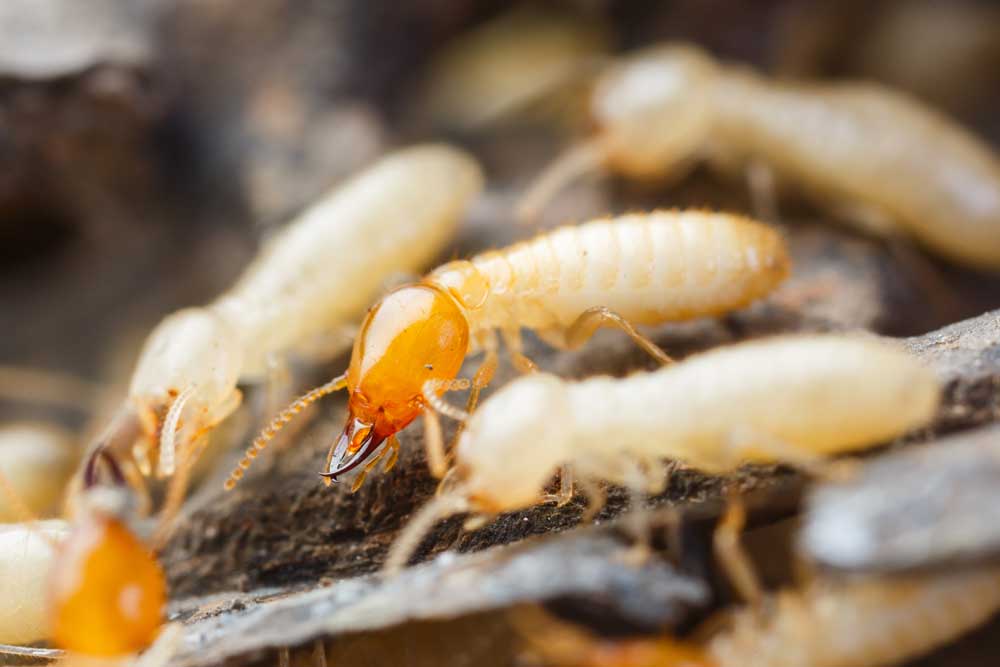Termites are wood-destroying insects that generate billions of dollars in property damage across the country each year. In this region, the primary types of termites found include subterranean termites and drywood termites. Properties left without defense against termites are susceptible to costly property damage as these pests erode wooden areas on the premises.
How do you get rid of termites in your house quickly? Property owners seeking prompt solutions to termite infestations should consult with a professional pest management professional. An experienced Manteca pest control company has a team of specialists that know how to eliminate termites completely and safely.
How To Tell If Your Home Has A Termite Problem
How to know if I have termites damaging my property? Homeowners should look for some of the most common signs of termite activity, including:
- Walls might sound hollow when knocked on.
- Floors might sound increasingly “creaky,” and ceilings might begin bowing.
- During the spring months, winged termites often are seen gathering in “swarms.”
Keep in mind that termites usually begin eroding wood structures from the interior, and damage might remain undetected for weeks or months. Therefore, responding quickly by contacting a local termite control company is important after detecting these pests.
A Termite Infestation Can Cause Extensive Property Damage
Termites may create significant damage to homes, particularly when they damage key structural components.
Do termites eat cardboard, drywall, or other materials found inside a home? Termites consume items that contain cellulose, a carbohydrate that naturally exists in leaves, fruits, vegetables, and cotton. Although they most commonly attack wood, termites also will damage paper, carpet, and some inedible materials that impede their access to wood.
Don’t Try To Get Rid Of Termites On Your Own
Are you wondering how to get rid of termites yourself? Too many individuals try do-it-yourself (DIY) home termite treatment options like those sold in local home improvement stores. Many of these sprays, traps, or baiting systems are highly touted yet, deliver short-term results that are insufficient for expelling larger termite infestations.
Some store-bought termite control products today might also contain harsh chemical formulas. To achieve a positive outcome, homeowners should consult with a professional provider of pest control services for assistance with these unwanted pests.
The Best Way To Get Rid Of Termites And Keep Them Away
How do I get rid of termites that are actively damaging your property? Contacting a local termite control company is the smart move for property owners with an existing infestation.
With more than 60 years of combined experience in the pest management industry, Next Generation Pest Control is familiar with handling termite-related problems for residential and commercial customers in the Manteca region. Our team of experienced service technicians receives high-quality training and has a host of termite treatment options at their disposal. One of our professionals will conduct a detailed property inspection and detect any termite activity—which includes those who are deeply entrenched in hard-to-reach areas of the structure.
In many instances, we deploy fumigation as a tool for effectively treating groups of termites inside walls or below floors. We often use liquids containing Bora-Care that penetrates wood and limit termites, carpenter ants, and some types of destructive beetles. We provide solutions for new or existing structures that comply with WDO and WDI standards.
For protecting structures with a slab foundation, we often perform liquid slab injections that include a one-year termite protection guarantee. As a truly full-service provider of pest control solutions, Next Generation Pest Control also assists customers struggling with bed bugs, nuisance birds, cockroaches, and a variety of other meddling pests. Contact our office today for further details. Remember to ask about our customized, ongoing property plans that involve monthly, bi-monthly, or quarterly treatment visits.




